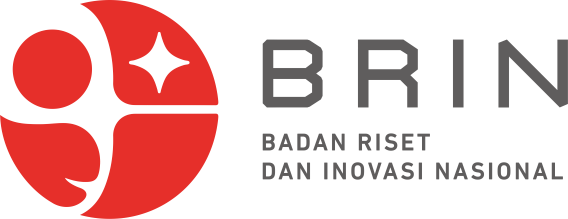Performance Comparison of Particle Filter, Optical Flow, and CSRT in Unsupervised Visual Tracking for Mobile Robots
 Heru Taufiqurrohman (1*)
Heru Taufiqurrohman (1*),
Abdul Muis (2),
Yusuf Nur Wijayanto (3),
Tsani Hendro Nugroho (4),
Zaid Cahya (5)
(1) Universitas Indonesia - Indonesia

(2) Universitas Indonesia - Indonesia
(3) National Research and Innovation Agency - Indonesia
(4) National Research and Innovation Agency - Indonesia
(5) Universite Polytechnique Hauts de France
Valenciennes - France
(*) Corresponding Author
Received:
October 31, 2024; Revised:
December 07, 2024Accepted:
December 23, 2024; Published:
August 31, 2025
How to cite (IEEE):
H. Taufiqurrohman, A. Muis, Y. N. Wijayanto, T. H. Nugroho, and Z. Cahya, "Performance Comparison of Particle Filter, Optical Flow, and CSRT in Unsupervised Visual Tracking for Mobile Robots,"
Jurnal Elektronika dan Telekomunikasi, vol. 25, no. 1, pp. 28-37, Aug. 2025.
doi:
10.55981/jet.688
Abstract
This study addresses the challenges of selecting a suitable visual tracking method for real-time mobile robot applications, particularly in scenarios where the target is moving on the ground. The primary research problem addressed is the need for a flexible, computationally efficient tracking method that does not rely on pre-existing labelled datasets, as is often required by deep learning approaches. Unsupervised methods can overcome this problem by utilizing object motion information in each image frame without prior training. With many unsupervised tracking methods available, choosing an appropriate algorithm that can perform efficiently under dynamic conditions becomes a critical problem. The study compares the performance of three unsupervised visual tracking methods: particle filter, optical flow, and channel and spatial reliability tracker (CSRT) under various tracking conditions. The dataset used includes challenges such as moving target variations, changes in object scale, viewpoint changes, suboptimal lighting, image blurring, partial occlusions, and abrupt movements. Evaluation criteria include tracking accuracy, resistance to occlusion, and computational efficiency. The particle filter with ORB and a constant velocity model achieves a root mean square error (RMSE) of 36.47 pixels at 13 frames per second (fps). Optical flow performs best with an RMSE of 10.79 pixels at 30 fps, while CSRT shows an RMSE of 252.35 pixels at 4 fps. These findings highlight the effectiveness of optical flow for real-time applications, making it a promising solution for mobile robot visual tracking in challenging situations.
 http://dx.doi.org/10.55981/jet.688
http://dx.doi.org/10.55981/jet.688
Keywords
Unsupervised visual tracking, mobile robots, particle filter, optical flow, CSRT, real-time tracking.
Full Text:
 PDF
PDF
References
B. Li, C. Fu, F. Ding, J. Ye, and F. Lin, “All-day object tracking for unmanned aerial vehicle.” 2021. doi: 10.48550/arxiv.2101.08446.
V. Devyatkov and I. I. Lychkov, “Semi-automatic multi-camera video annotation tool for object tracking and optical flow benchmark creation.” 2019. doi: 10.33965/cgv2019_201906c062.
G. Wang, Y. Yang, and K. He, “A robust facial feature tracking method based on optical flow and prior measurement,” International Journal of Cognitive Informatics and Natural Intelligence. 2010. doi: 10.4018/jcini.2010100105.
K. Song, C. Yuan, P. Gao, and Y. Sun, “FPGA-based acceleration system for visual tracking.” 2018. doi: 10.1109/icsict.2018.8565781.
H. Taufiqurrohman, A. Muis, Y. N. Wijayanto, T. H. Nugroho, D. E. Cahya, and Z. Cahya, “Visual target locking during fast ground maneuver using enhanced orb predictive particle filter,” in Proceeding - 2023 International Conference on Radar, Antenna, Microwave, Electronics, and Telecommunications: Empowering Global Progress:
Article Metrics
Metrics powered by PLOS ALM
Refbacks
- There are currently no refbacks.
Copyright (c) 2025 National Research and Innovation Agency

This work is licensed under a
Creative Commons Attribution-NonCommercial-ShareAlike 4.0 International License.

























